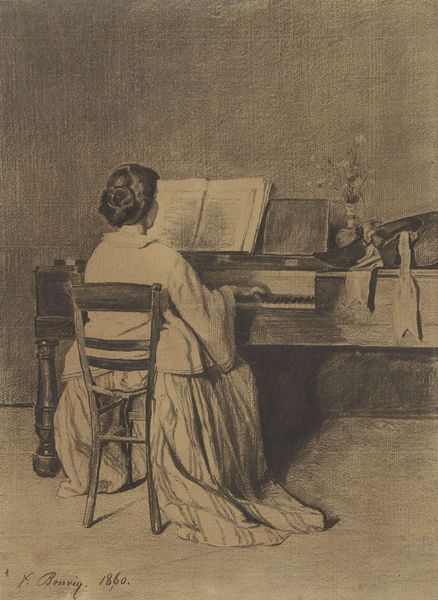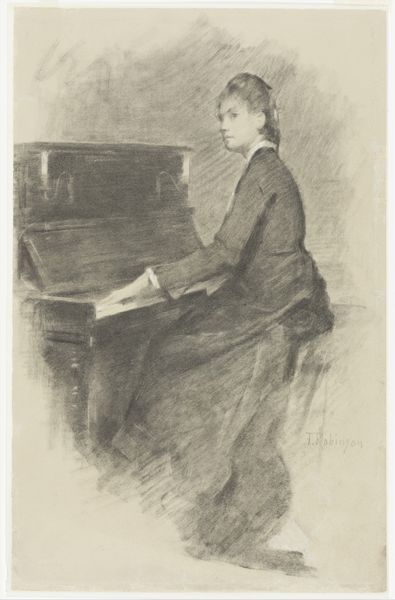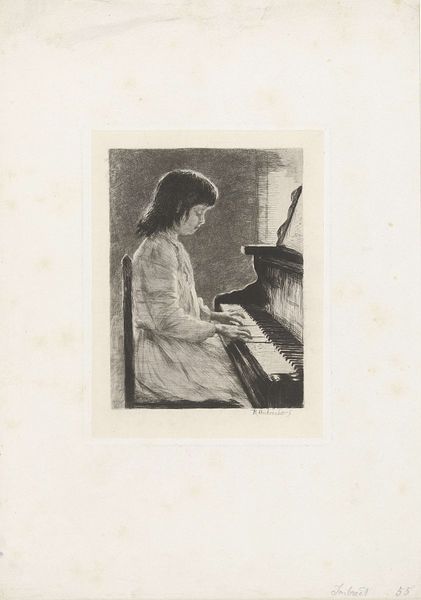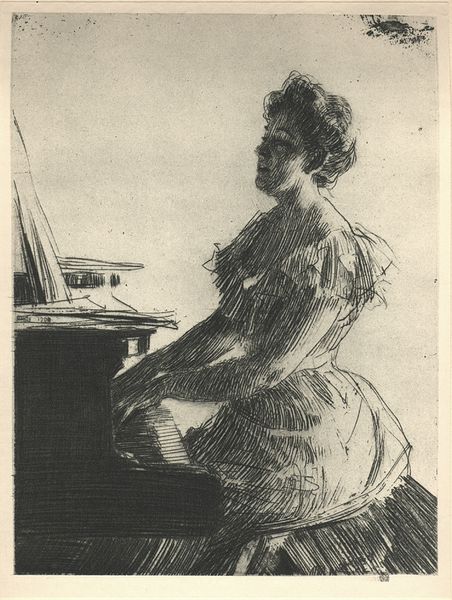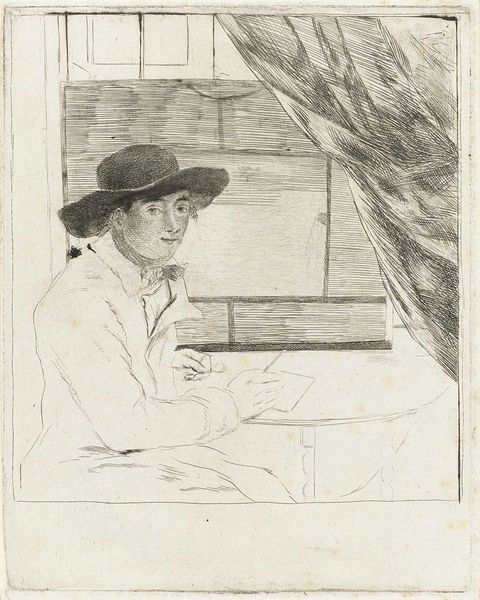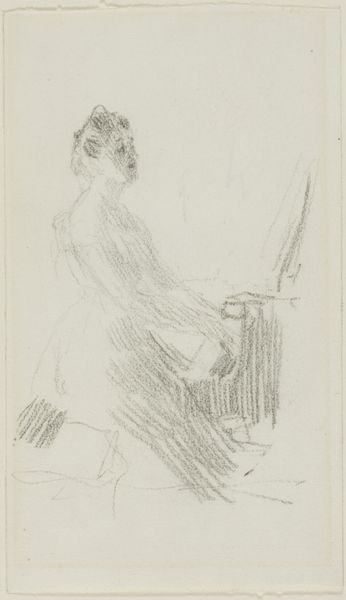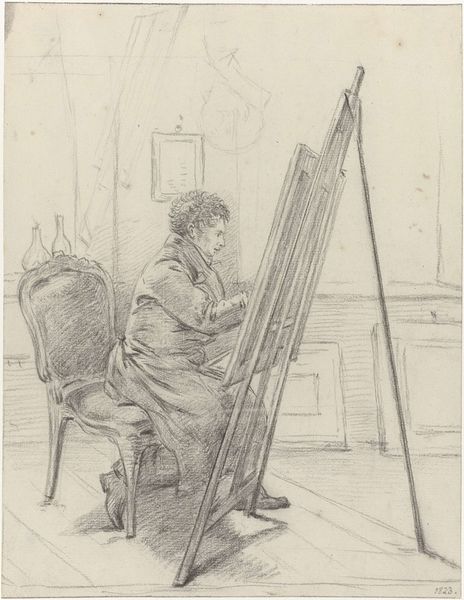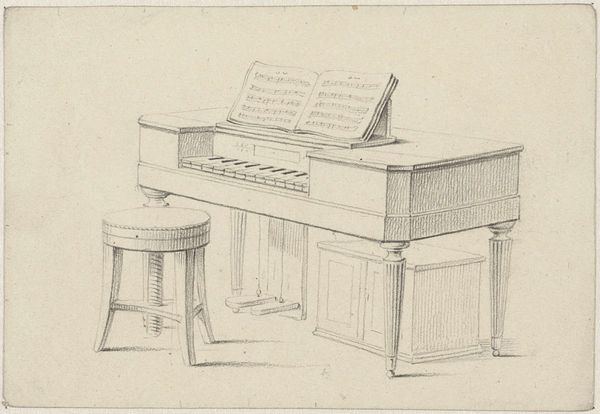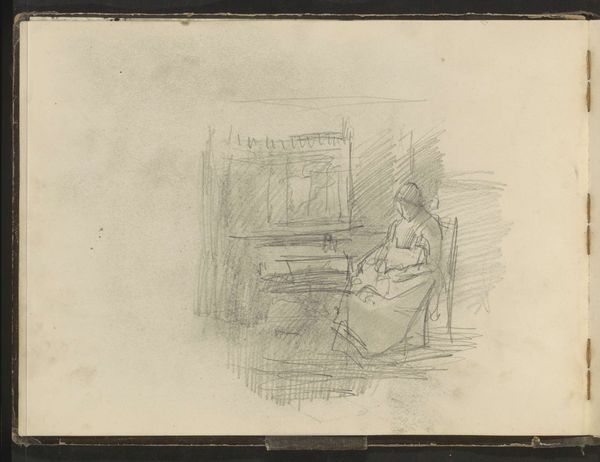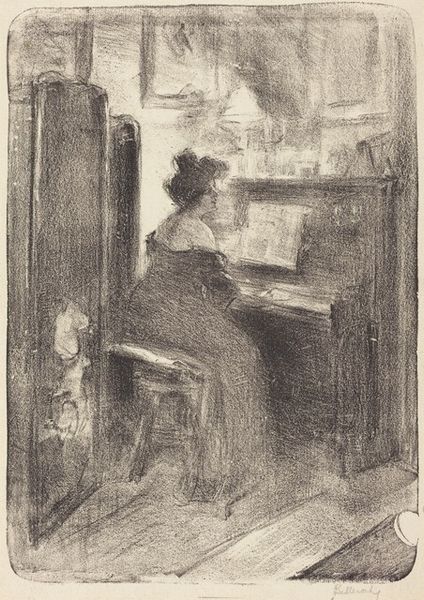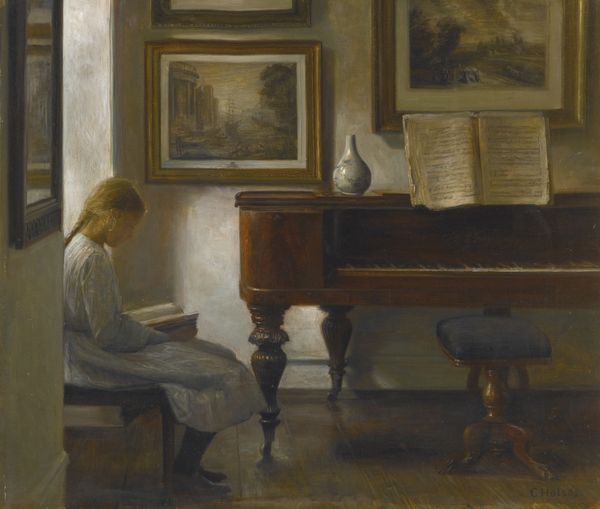
drawing, ink, pencil
#
portrait
#
drawing
#
quirky sketch
#
pencil sketch
#
figuration
#
personal sketchbook
#
ink
#
idea generation sketch
#
sketchwork
#
romanticism
#
pen-ink sketch
#
pencil
#
line
#
sketchbook drawing
#
genre-painting
#
storyboard and sketchbook work
#
sketchbook art
#
initial sketch
Dimensions: height 173 mm, width 203 mm
Copyright: Rijks Museum: Open Domain
Curator: Alright, let's turn our attention to "A Pianist Seated at the Keyboard," a drawing rendered in ink and pencil, crafted in 1795 by Johann Friedrich August Tischbein. What springs to mind? Editor: There’s something immediately intimate about this sketch. It’s as though we've caught the pianist in a private moment of creation. It feels... unfinished, raw, almost vulnerable. Curator: Exactly. Observe how Tischbein uses a dynamic network of lines to capture both form and shadow. The hatching technique suggests volume without the need for meticulous detail. Consider how this lends an air of immediacy to the composition. Editor: I love the open window to the left, papers haphazardly tossed on the ledge – such a clever inclusion that really transports us inside the scene. I'm imagining light filtering in as he plays. Do you think he captured this in his own house? Curator: Likely! It embodies certain characteristics of Romanticism: the emphasis on emotion and individuality but in a particularly domestic setting. The genre-painting aspect situates art in the sphere of everyday life. And note his technique... the subtle gradations achieved with simple materials are very typical of his preparatory sketches. Editor: He almost appears startled that we are watching him. Curator: You pick up on an intriguing point. His gaze holds our attention; this fleeting, candid instant suggests much more than merely a man playing. His world seems very accessible but is ultimately unknown. Editor: Absolutely. This seemingly simple sketch reverberates with unspoken thoughts and passions. Curator: Precisely. I keep discovering something new each time. Editor: As do I... an everyday symphony!
Comments
No comments
Be the first to comment and join the conversation on the ultimate creative platform.

